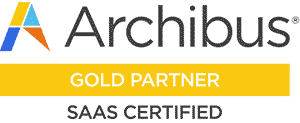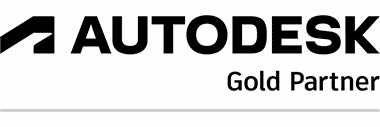As the world population continues to grow, the demand for urban and industrial construction projects will also carry on at a massive scale. Building information modeling (BIM) systems are playing a vital role in this development, with both government and private sector groups seeking more efficient, collaborative ways to build roads, skyscrapers, tunnels, and more.
BIM software is so effective that countries like Abu Dhabi and the UAE now require its use for all major construction projects. Other countries are following suit, and the BIM market is estimated to reach a value of $9.81 billion by 2026.
The COVID-19 pandemic has further increased the demand for BIM, which helps construction companies adhere to safety and distancing requirements. (Global use of Autodesk, one of the most popular BIM software options, increased by 350% in the first quarter of 2020.)
Clearly, BIM software is quickly becoming the new standard in the construction industry. But what are the top benefits of using BIM during the construction process? And how can construction companies leverage the technology to the fullest?
A quick guide to BIM
Like blueprints and CAD software that came before, BIM is fast becoming the standard for drafting, designing, and visualizing any construction project. But unlike past methods, BIM is highly intelligent and collaborative.
Changes to the design are updated and stored automatically in a common data environment, so architects and contractors can immediately observe these changes. In addition, small tweaks to any element of the 3D model flow through to the entire building, which helps maintain consistency and accuracy.
Design is just one element of BIM, however. The software also offers features like scheduling, cost estimations, budget analysis, energy consumption, and more.
Ways to leverage BIM data
The advantages of BIM data go well beyond 3D modeling. But leveraging BIM requires a thorough understanding of how the software can help a particular segment. For example, for those looking to use BIM to FM (facility management) purposes, the manager should first define their needs, make a data storage plan, and then classify information.
Here are other ways architects, construction firms, capital project managers, and operations and maintenance professionals can successfully leverage BIM data:
- GPS and drones. Every 3D design starts with a point cloud, and that point can sometimes take weeks to come up with. However, GPS software and drones can be used to get quick, accurate, and detailed measurements as a launching point for BIM designs.
- Laser scanning. Laser scanning is the best way to outline existing structures that may clash with a new construction project. This information can be directly imported into BIM software, making it easy for architects to design buildings with minimal rework.
- Mobile apps. Owners can now use BIM software like Autodesk anywhere they go, thanks to mobile apps that can communicate both internally and externally to immediately reflect design changes.
- Project management software. Integrating BIM data with project management software helps to further streamline the entire construction process, from the initial sketches to completion.
Maximize BIM with the right tech
BIM offers many clear benefits, allowing companies to build in a more streamlined, cost-effective, sustainable fashion. Combined with an open project management tool that integrates flawlessly with Autodesk and other BIM software, like Archibus, stakeholders are able to access vital information that keeps them on track with their goals.
Greater Cost Savings & Predictability
Capital projects present many budgeting challenges, with 30% of construction costs coming from rework and 55% of maintenance costs remaining reactive. Fortunately, BIM can help to greatly reduce costs during the building process, by minimizing delays and providing greater visibility. BIM can also help reduce costs across the life of the structure, from maintenance forecasting to energy specifications.
Archibus helps take these benefits to the next level. Weighted performance scorecards highlight over-budget projects and allow owners to review actual costs in comparison to baseline estimates.
Fewer Errors & Improved Schedules
When asked about the benefits of using BIM, 34% of people surveyed answered that “fewer errors” topped their list. Because BIM offers insightful data and better schedule forecasting, builders are less likely to encounter problems in later stages of construction. In addition, the same survey found that 26% of respondents believe BIM offers an ROI of 25% or more—further highlighting the importance of reducing errors.
Archibus creates a central repository of data, offering a “top-down” perspective that makes it easier to manage projects and changes once construction is completed and the building is handed over to the owner/occupier. With insights like project priorities, actions, and costs, all parties involved have quick access to streamlined reporting and project execution.
Greater Insights
BIM software makes it easier for multiple parties to communicate about the construction process in real-time. This allows all stakeholders to gain valuable insights and a greater understanding of the 3D modeling before it is put into action.
One of the premier advantages of using Archibus is the ability to see each subsystem within a building and understand its context. How does that system exist in relation to others, and what’s its role in broader building function? With this information in-hand, facilities managers can make better decisions about how they manager, alter, and maintain different subsystems, and the effects of those decisions on the building.
Increased Efficiency
In another survey of BIM users, respondents reported that the software allows them to spend less time documenting and more time designing. Increased efficiency means architects can dedicate more of their workday to creating sustainable, cost-effective buildings.
BIM risk mitigation takes many forms. Utilizing BIM data in an integrated workplace management system (IWMS) like Archibus can help model maintenance and improvement tasks sequentially, to reduce risks associated with the scope of a project and increase efficiency. Or it can deliver risk analysis for certain aspects of building function. It can even mitigate on-the-job risks by assessing the inherent dangers of specific tasks. In short: BIM makes facilities maintenance and modification safer.
Comprehensive Views
Organizations typically have a large number of projects in progress across the portfolio. Using BIM data, Archibus can help connect these project to a capital budget plan and ranks them so capital spend is aligned with the corporate mission.
By integrating BIM data into Archibus, managers get a comprehensive view of their entire project, which allows for appropriate building management once construction is complete. Using data collected during design and construction phases lets owners and operators easily track and manage assets and space. The payoff is improved asset performance and space utilization because all departments are aligned.
For example, Maintenance isn’t repairing a roof, that capital planning has scheduled to replace, in a building that CRE has slated to sell, and technology is completing a mission critical project in. BIM correlates the activities across the organization.
BIM for better building
BIM data provides a wealth of opportunities for capital projects managers, real estate developers, and more. Coupling BIM software with Archibus allows owners to leverage existing data, improve construction schedules, and get greater cost predictability.
Robotech CAD Solutions, Inc. can help you to take advantage of the benefits of utilizing Archibus and BIM together.
Call us at 201-792-6300 to find out more.



